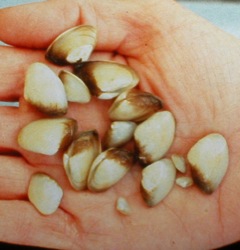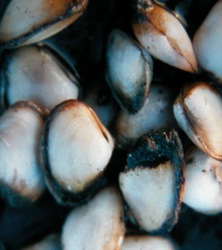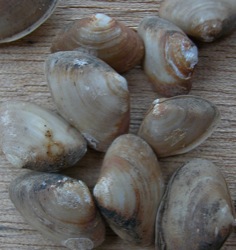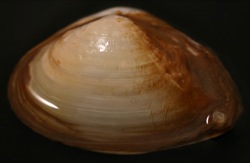Corbula amurensis Image 3
Corbula amurensis from San Francisco Bay. Note the dark fouling on the upper one-third or so of the shell that had protruded from the mud.
Return to Top
Corbula amurensis Image 2
A block of mud containing
Corbula amurensis from the bottom of San Francisco Bay.
Return to Top
Corbula amurensis Image 1
Corbula amurensis from San Francisco Bay.
Return to Top
Corbula amurensis (Schrenck, 1861)
OVERBITE CLAM, ASIAN CLAM, AMUR RIVER CLAM, BRACKISH-WATER CORBULA
Corbula amurensis is a tan, white or yellow clam, up to about
25 mm long. It lives partly buried in the sediment, with its hind third
or half exposed above the surface. This is often colonized by small organisms
and stained brown, in contrast to the clean, buried portion of the clam.
The umbo—the hump at the center of growth—is at the hinge or upper
margin of the shell and evenly centered between the front and hind ends,
giving the shell the overall shape of a broad isosceles triangle.
Return to Top
Mya arenaria Image 10
Mya arenaria shells washed up on a beach at Point Pinole, in the northern part of San Francisco Bay.
Return to Top
Mya arenaria Image 9-dug from hole
23
Mya arenaria that were dug from a shallow, one-foot-square pit (along with 37 other clams) on the east shore of San Francisco Bay.
Return to Top
Mya arenaria Image 8-young
A young
Mya arenaria from San Francisco Bay, with siphons protruding from the hind end.
Return to Top
Mya arenaria Image 7-interior view
Interior view of the same valve, with the head end to the right, showing the shelf-like projection (1), muscle scars (2), the pallial line (3) and the deep indentation in the pallial line (4) that outlines the pouch that held the retracted siphons.
Return to Top
Mya arenaria Image 6-closeup
Closeup of the shelf-like projection.
Return to Top
Mya arenaria Image 5-largest of valves
The largest of the valves from the previous image, showing the shelf-like projection and the shell interior. The shell is about 10 cm long, and the head end is to the left.
Return to Top

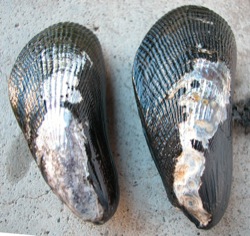 Geukensia demissa
Geukensia demissa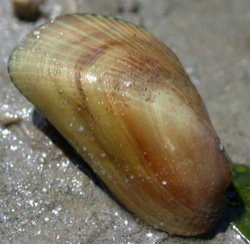 Musculista senhousia
Musculista senhousia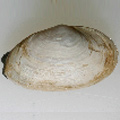 Mya arenaria
Mya arenaria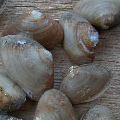 Corbula amurensis
Corbula amurensis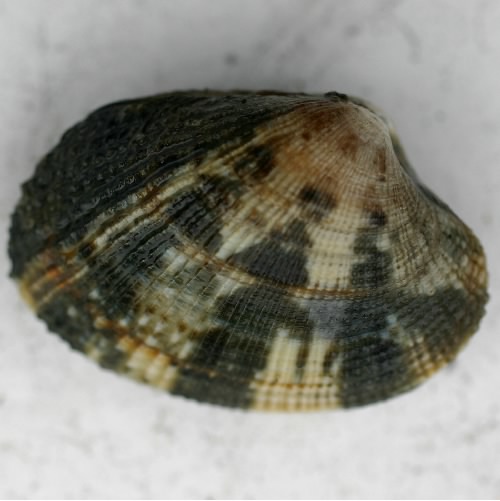 Venerupis philippinarum
Venerupis philippinarum